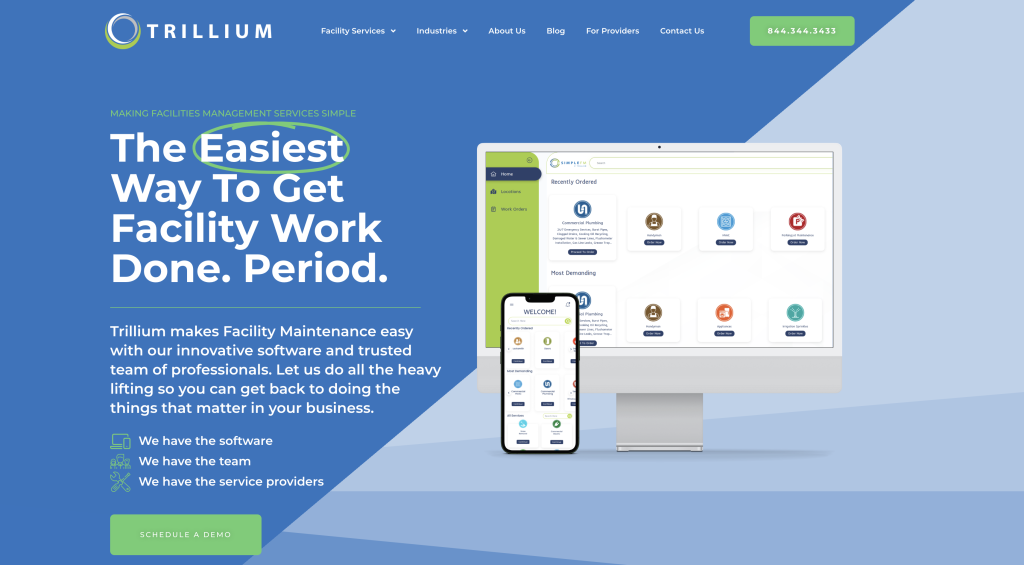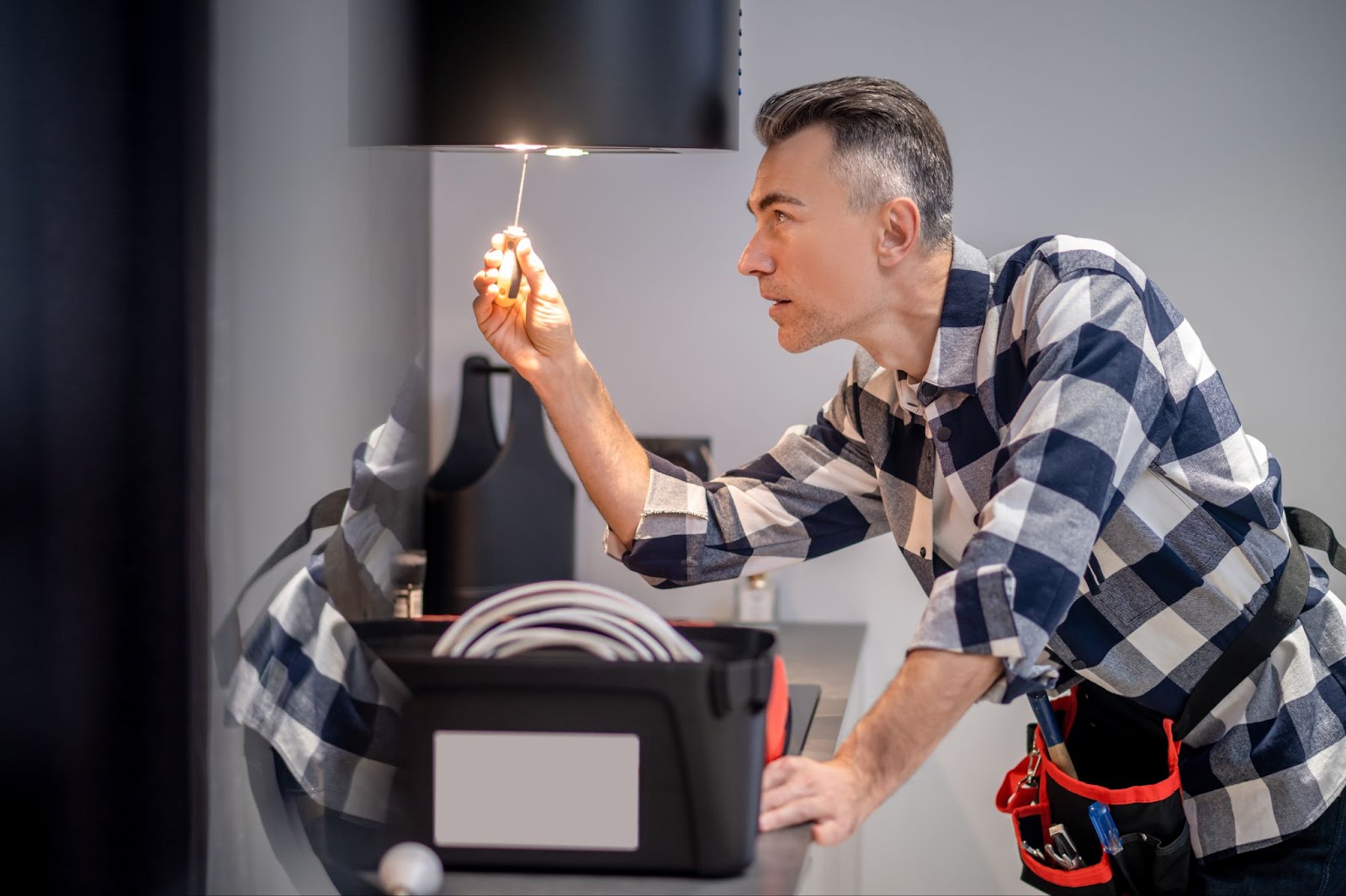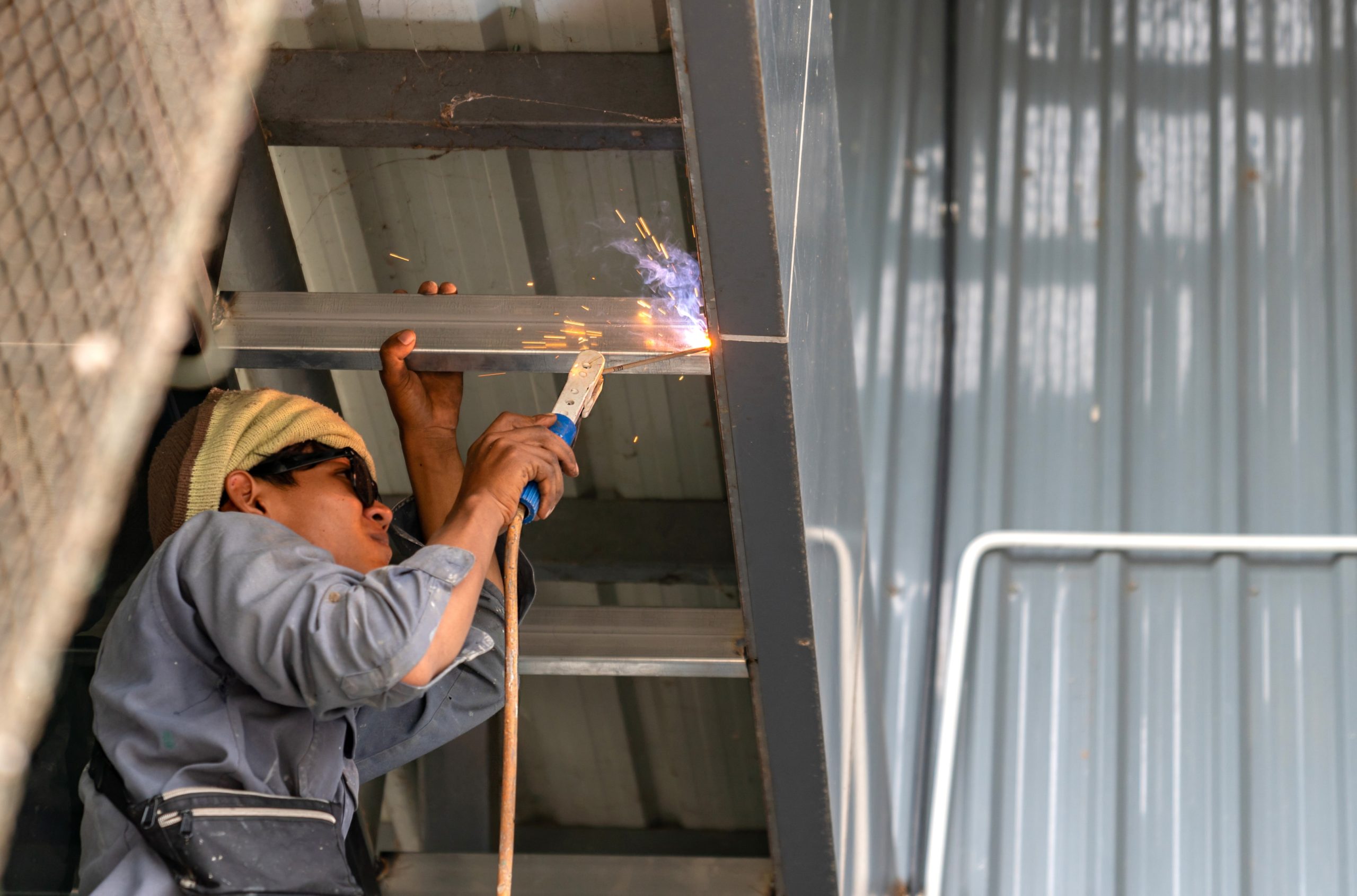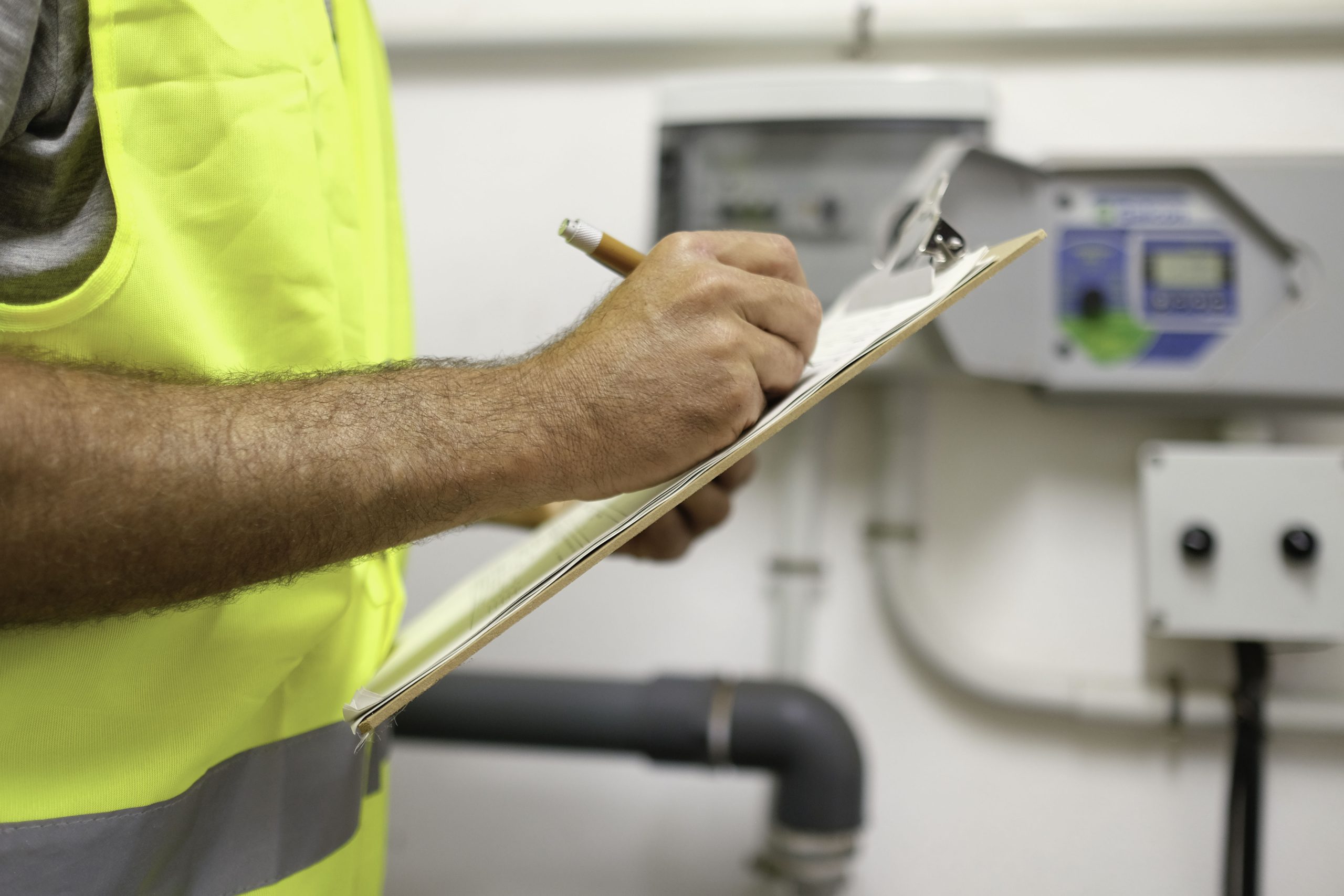If you manage a commercial property, you already know repairs come with the job. Maybe it’s a leaky ceiling one week or the HVAC going down the next. Either way, something always needs attention.
These issues aren’t just frustrating. They also disrupt business and can lead to bigger problems if you let them sit too long.
Below, we’ll cover the most common commercial building repairs and help you figure out how to fix them.
1. Structural Repairs
You know that crack in the wall you’ve been meaning to check? It might seem minor, but it could point to a serious structural issue.
Keep an eye out for these signs:
- Uneven floors or new gaps between walls and baseboards
- Cracks in the foundation or brickwork outside
- Visible water damage or leaks near the ceiling after rain
- Drafts or moisture around windows and doors
Over time, these structural damages lead to costly repairs and disrupt your business operations.
Repairs You Should Prioritize
You don’t need to fix every crack immediately, but some defects demand quick action. Start by patching and sealing obvious cracks to prevent moisture from spreading. Replace broken roof materials before leaks take hold.
If you notice walls shifting or sagging, call structural engineers. Don’t overlook doors or windows that no longer close properly. Resealing or replacing them helps maintain a safe environment.
These are preventive measures. Catching issues early and committing to regular inspections helps you avoid increased energy costs.
2. HVAC Repairs
When the air conditioning goes out in the middle of summer, you don’t just get warm rooms. You get complaints from anyone walking into the building.
Your HVAC system controls airflow, filters out dust, and helps maintain a comfortable environment.
Look out for:
- Rooms that never seem to reach the right temperature
- Weird smells or clunky sounds coming from vents
- Energy bills that suddenly jump
- Dirty filters that haven’t been touched in months
These are early warnings. If you catch them now, you can avoid bigger problems like damaged motors or complete system failure. Poor airflow also messes with ventilation systems, which can affect safety codes and building inspections.
Fix Major Problems Right Away
Clean or replace clogged filters. If certain zones still feel off, thermostat or zone control issues could be to blame. Leaky ducts are another common culprit, and sealing them improves both efficiency and comfort.
If the system is making strange noises or can’t keep up, bring in certified technicians to inspect the fans or the compressor.
HVAC repairs are one of the most common across commercial properties. Regular maintenance and timely interventions minimize disruptions to your business.
3. Electrical Repairs
When lights flicker or a circuit trips, it’s easy to brush it off. But what starts as a small inconvenience can turn into a major safety risk.
Electrical systems power everything, such as lighting, HVAC, elevators, and emergency equipment. If something goes down, so does your building’s ability to function.
Stay alert to these warning signs:
- Outlets that spark or feel warm
- Breakers that keep tripping for no clear reason
- Buzzing sounds near panels or fixtures
- Lighting that flickers, dims, or cuts out
Electrical faults like these often lead to more significant damage if they’re not addressed quickly. Even minor issues can disrupt building operations and create safety concerns for everyone in the space.
Handle These Electrical Faults First
Replace outdated wiring and overloaded panels. These are safety risks and should be addressed quickly. Faulty switches and burned-out outlets might seem harmless, but they slow down your building operations.
If you haven’t tested your smoke detectors or backup lights recently, now’s the time. Lastly, bring in a licensed service provider to inspect and certify your setup after any power-related failure.
Electrical repairs are crucial in commercial building maintenance. Staying on top of them doesn’t just help things run smoother. It helps you maintain safety, stay code-compliant, and avoid unexpected breakdowns.
4. Plumbing Repairs
A slow leak might seem like no big deal until it warps the floor, ruins drywall, or leads to mold. Low water pressure or persistent odors often indicate failures in your plumbing system that require immediate attention.
Plumbing doesn’t work in isolation either. In many buildings, water lines connect to boilers or heating systems, which means one small issue can trigger others if you’re not paying attention.
Watch for drains that back up without warning, water pressure that dips suddenly, or unexplained wet spots on ceilings and walls. Persistent dripping faucets or leaking fixtures that won’t tighten properly are often signs of serious plumbing damage.
These problems tend to escalate. Water damage can creep into electrical components, weaken structural elements, and cause pipe bursts in colder weather.
Fix These Issues Immediately
You should never let plumbing issues sit for long. Prioritize the following:
- Leak repairs on visible pipes and under sinks
- Drain cleaning for blocked or smelly lines
- Fixing broken flush valves or faulty pressure regulators
- Replacing corroded shut-off valves and worn-out fixtures
Stay on top of routine inspections to catch pipe-related damage early. It’s one of the most effective proactive measures you can take to avoid emergencies later.
Plumbing failures can throw off your entire schedule. But with the right repair plan and the right services lined up, you can keep your building in optimal condition.
5. Fire Safety Repairs
You shouldn’t take fire safety lightly. If something fails during an inspection or an emergency, the consequences can be serious.
Even broken lights or dead batteries in smoke detectors can put people at risk.
Some problems are easy to spot, except for these:
- Exit signs that don’t light up or flicker
- Alarm systems that haven’t been tested in months
- Fire extinguishers with missing tags or outdated labels
- Sprinkler heads that look corroded or blocked
Repairs That Keep You in Compliance
Replace batteries and test smoke detectors regularly. Make sure emergency lighting is visible and operational. If your alarm system shows any error messages, get the control panel checked and repaired.
Sprinkler systems also need routine service, especially if you’ve noticed blocked or leaky heads.
If your building has experienced fire damage in the past, don’t assume it was handled completely. Double-check that all systems were restored properly and meet current safety codes. Any restoration process should include a fire system review.
These repairs help you maintain safety and avoid steep fines. More importantly, they guarantee that your structure is ready if the worst ever happens.
6. Exterior Repairs
Cracked pavement, broken signs, or dead landscaping make the whole property feel neglected. Exterior damage can also lead to safety risks, liability concerns, and even more maintenance issues.
Clogged gutters, loose handrails, and poor outdoor lighting don’t just look bad. They lead to trips, falls, and water intrusion. During storms, neglected areas can cause significant damage or compound problems from natural disasters.
Focus Your Budget On These Problems
Start with anything that poses a safety risk. Uneven pavement and loose railings need immediate attention. Lighting should be consistent and bright, especially in parking areas and walkways. Refresh faded or broken signage, too.
Don’t forget about drainage. Gutter cleaning might feel like a small task, but clogged systems cause water to back up and seep into the building’s foundation.
Exterior upkeep should be part of your commercial building maintenance plan. These solutions help you avoid injury claims and maintain your property’s value.
7. Interior Repairs
Once people step inside, they notice the details. A broken door, chipped paint, or water stains on the ceiling can make the whole space feel off.
Keep tabs on these common building interior concerns:
- Stained ceilings from hidden leaks or past plumbing issues
- Doors that don’t latch or open properly
- Scuffed walls, peeling paint, or cracked tiles
- Rooms that always feel drafty or overheated
Problems like these often point to equipment that’s no longer functioning. Even something like off-kilter water pressure in the restroom can frustrate staff and cause workflow interruptions.
Tackle These Repairs First
Focus on what affects daily use. Patch and repaint damaged walls to keep the space clean and welcoming. Fix door and window hardware that creates security or usability concerns.
Replace damaged flooring that could cause trips or reflect poorly on your property. Adjust vents and thermostats so you’re not battling temperature swings every day.
Interior repairs prevent downtime and avoid pulling your team into last-minute emergencies.
How to Keep Your Commercial Building Maintenance Under Control
When you’re handling tight budgets and vendors who never show up on time, it’s easy to forget about building repairs. But letting things slide only leads to bigger problems and higher costs.
You just have to stay consistent. When you have a system that catches potential problems early and keeps track of what’s been done, everything runs smoother.
Start With Routine and Regular Inspections
Set a rhythm that works for your team. Walk through high-traffic areas weekly and scan for issues that could become safety concerns. Check HVAC and plumbing systems before seasonal changes hit hard. Fire safety systems, including smoke detectors and alarms, should get regular attention too.
These quick walkthroughs give you the chance to spot problems before they require costly capital improvements. You’ll also get a clearer picture of how your building is aging and where to allocate resources efficiently.
Track Repairs and Spot Repeat Offenders
Don’t rely on memory or scattered emails. Use a system or software that lets you track what’s been fixed, when, and by whom. You’ll start to spot repeat offenders, whether it’s a leaky restroom or flickering hallway lights.
Seeing the full repair history helps you make informed decisions and avoid wasting money on the same issue twice.
Trillium Can Keep Your Building in Top Shape

Managing repairs can feel like a full-time job. You’re fielding complaints, chasing down vendors, and trying to prevent another surprise breakdown. It’s exhausting.
But it doesn’t have to be. With the right support, you can keep everything running without the late-night headaches.
That’s where Trillium comes in. You send a work order by phone, email, or their mobile app, and they handle the rest. From finding the right tech to scheduling and follow-ups, it’s all off your plate!
Trillium works with a trusted network of certified professionals across 58 trades. No guessing, no scrambling, and no time wasted. You also get 24/7 support, full admin help, and software that makes tracking repairs easy.
No contracts. No hidden costs. You only pay for the service you need, when you need it. It’s flexible, fast, and built to keep your building in top shape.
Access Trillium’s services for free!
FAQs About Commercial Building Repairs
Who is responsible for commercial property maintenance?
Responsibility usually depends on the lease agreement. In many cases, the property owner is responsible for structural repairs and major systems, such as electrical, plumbing, or roofing. Occupants or internal teams may handle minor upkeep, but overall commercial building maintenance often falls under the property owner’s or facility manager’s scope.
How much does it cost to remodel a commercial building?
It varies widely. Costs depend on the size of the space, the systems involved, and the extent of capital improvements needed. Remodeling that includes HVAC upgrades, plumbing reroutes, or restoring structural integrity can run high. That’s why it helps to separate cosmetic updates from true restoration process costs when budgeting.
What is maintenance for a commercial building?
Maintenance includes routine tasks that keep systems working and prevent potential problems from turning into expensive repairs. Think HVAC tune-ups, gutter cleaning, drain cleaning, replacing worn parts, or inspecting for leaks. It also involves keeping the building in compliance with safety codes.









